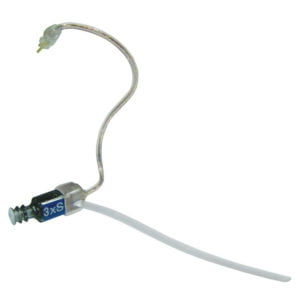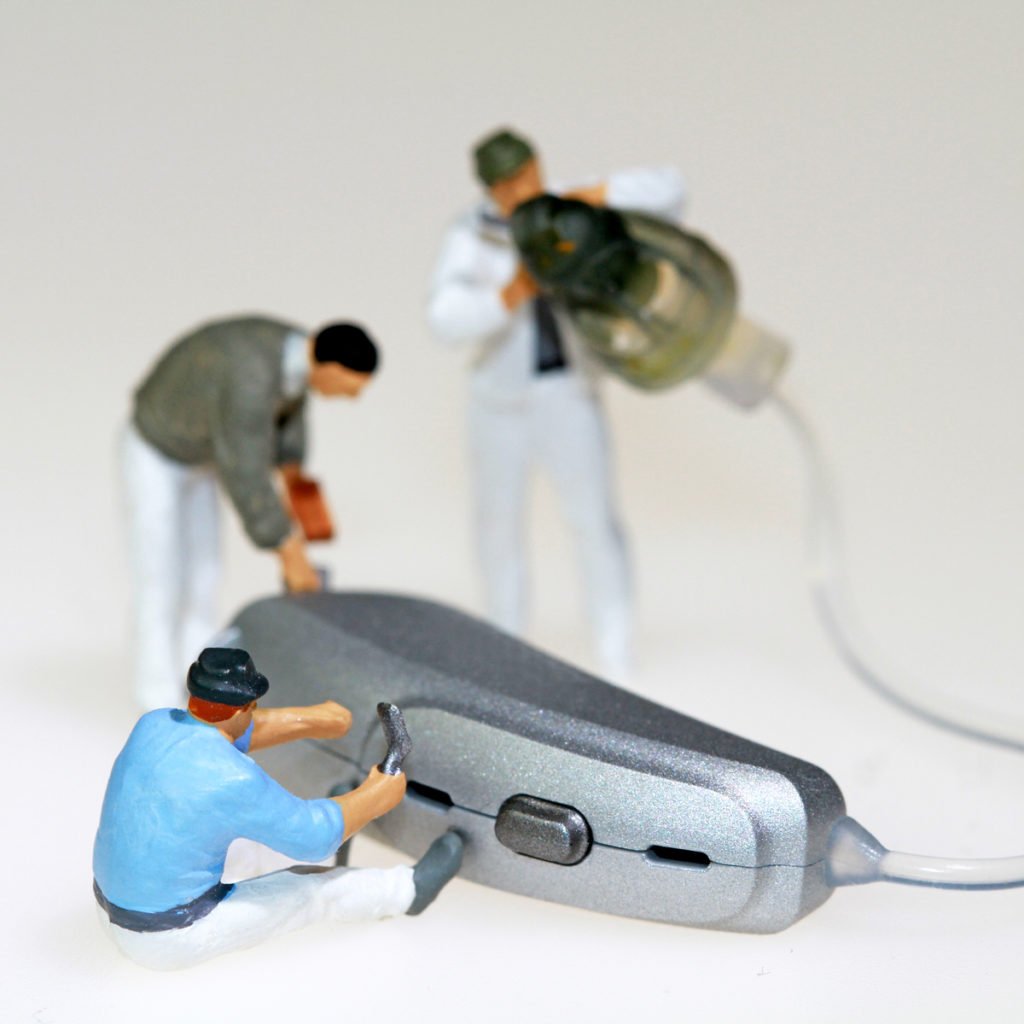Maintaining Your Hearing Aids
There are two main reasons for ensuring you maintain and clean your hearing aids:
- To ensure optimum performance and therefore your hearing
- To prevent an ear infection from dirt and bacteria
To understand the best way to maintain your hearing aids, it is important to know what type of hearing aid you have. Learn from your audiologist about how to identify what the different parts are and how you should look after them. Always make sure your audiologist goes through and explains what the different components of your hearing device are for and guides you through any cleaning tasks required to maintain them.
There are a few cleaning and maintenance tasks that you should carry out regularly. However, the most important thing to remember is that your hearing aids cannot detect when your hearing has changed. It is so important to visit your audiologist for a fresh hearing test at least once a year, even if you do not think you need to. As hearing usually changes gradually, it is not always obvious to the wearer that they are not getting the amplification they need – be sure to have it checked to make certain your hearing is at its full potential.
Maintaining your hearing aids may also come hand in hand with maintaining the health of your ear canals. Cerumen (ear wax) is produced by the ceruminous glands and is secreted into the ear canal. Whilst it has beneficial properties, excess wax can be problematic for hearing aid users by causing blockages to the receivers or earmoulds. If you find that your wax traps or tubes are blocking up very frequently then you should consider getting your ears checked by your audiologist and any occluding wax removed.
How to look after a RIC/RITE (receiver in the canal, sometimes known as a receiver in the ear) hearing aid
Here is an example of a RIC hearing device:

There are two main elements – the receiver which lives in the ear and the over-the-ear casing containing the other components including the battery and microphones. To look after this type of hearing aid you should:
- Wipe the dome clean, daily after removal, with a cleaning wipe or tissue clearing any visible wax from the sound output hole
- Wipe over the casing with a cloth and brush away any dirt or skin from the microphones at a weekly basis. If your RIC is rechargeable, ensure the charging contacts on both the casing and inside the charger are clean
- Change your wax trap at least once per month (as everyone produces different quantities and consistencies of cerumen, it may be that you need to change your wax trap more frequently)
- Take care with the receiver wire – they are robust but are not made to be bent excessively
How to look after an ITE/ITC/IITC (in the ear, in the canal, invisible in the canal) hearing aid
These hearing aids are all one piece with all of the components inside the casing. To look after this hearing aid you should:
- Wipe the casing clean daily after removal with a cleaning wipe or tissue clearing any visible wax from the sound output hole
- Brush away any dirt or skin from the microphones at least weekly
- Change your wax trap at least once per month (as everyone produces different quantities and consistencies of cerumen, it may be that you need to change your wax trap more frequently)
- If you have a vented shell and see wax building up in the vent, push a thin flexible plastic wire that should be provided through it to ensure it stays clear. Do this from the “outside” of the mold to the end that sits in your ear canal
What is a wax trap?
A very small plastic barrier that stops wax or debris from getting into the receiver. For RIC or ITE hearing devices, it is essential to be aware that different manufacturers produce different wax traps and there are not many that are cross-compatible. Contact your audiologist or hearing care provider if you do not know the type of wax trap your hearing aid needs.
How to look after a BTE (behind the ear) hearing aid with ear mold or slim tube
This is a BTE hearing aid. There are two main elements – the ear mold or slim tube that delivers sound into the ear canal and the over-the-ear casing containing the other components including the battery and microphones and receivers. To look after this type of hearing aid you should:
- Wipe the mold/dome clean daily after removal with a cleaning wipe or tissue clearing any visible wax from the sound output hole
- Wipe over the casing with a cloth and brush away any dirt or skin from the microphones at least weekly. If your BTE is rechargeable, ensure the charging contacts on both the casing and inside the charger are clean.
- If you have a vented ear mold and see wax building up in the vent, push a thin flexible plastic wire that should be provided through it to ensure it stays clear. Do this from the “outside” of the mold to the end that sits in your ear canal
- If you have a slim tube then you can pull the tube off of the hearing aid and push the thin flexible plastic wire through it to clear any wax or debris
- Get your mold re-tubed every six months

